Diagnosis of prostatitis includes more than 5 mandatory and 4 additional procedures. A rectal examination of the prostate gland or an ultrasound cannot tell for sure if a man has prostatitis. The reason is that many urological diseases have a similar clinical picture and only a comprehensive differential study eliminates the possibility of misdiagnosis.
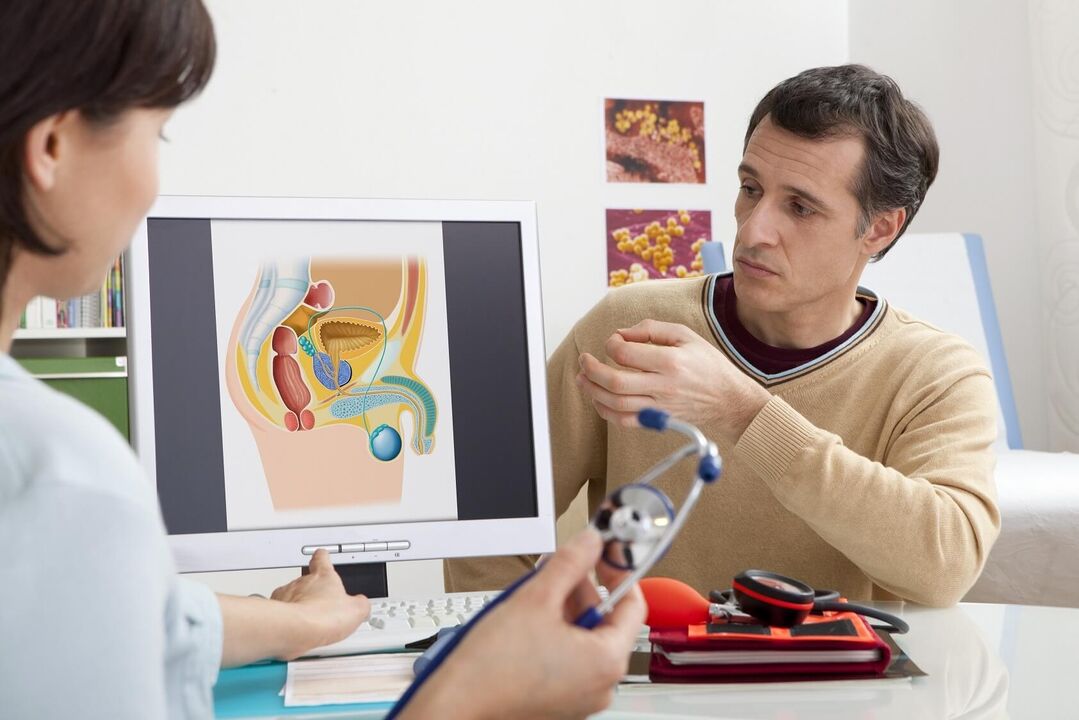
How to pass a test
Men should have a prostatectomy by a urologist 1-2 times a year (prostatitis, adenoma and other pathologies of the prostate gland are asymptomatic in the early stages). When you have symptoms, you need to see a specialist immediately. Such symptoms are pain in the lower abdomen and groin, difficulty urinating and erection.
The doctor begins by collecting complaints and patient history, then conducts a general examination. The next step when prostatitis is suspected is a rectal exam (palpation of the prostate gland through the rectum of a man). Finger studies allow the doctor to evaluate the following parameters:
- The size of the prostate gland.
- Surface (smooth or bumpy).
- Density of glands (soft or rocky).
- The presence or smoothness of the central groove.
- A man's sensitivity to prostatectomy (is it painful).
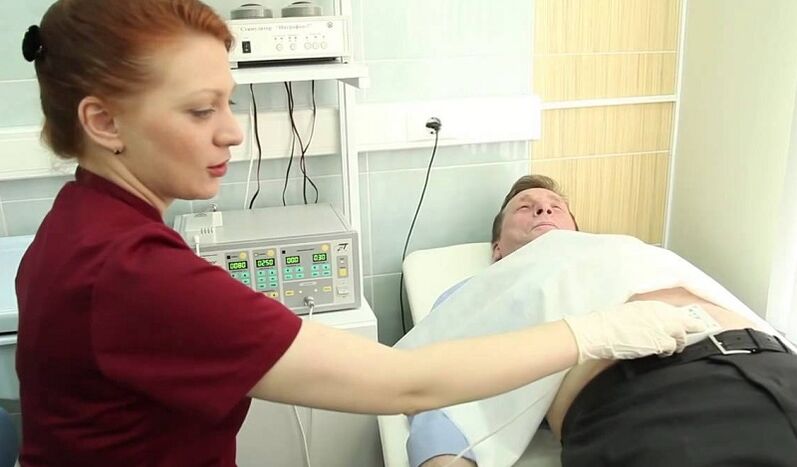
Normally, the right prostate has two symmetrical lobes, clearly palpable, and has a central groove. The diameter of a healthy prostate is from 2. 5-3. 5 cm, longitudinally - 2. 5-3 cm, the surface should be even, without obvious nodules, soft enough but not loose. Any deviation from the listed features means prostatitis, prostate tumor, fibrosis, cancer or other pathologies of the genitourinary system.
analysis
If a rectal exam and history are suggestive of prostatitis, the urologist's next action is to refer the patient to laboratory tests. According to clinical standards, the following types of examinations are required:
- clinical analysis of urine;
- general blood analysis;
- sowing urine for flora;
- when infection is detected, the susceptibility of the pathogen to antibiotics is determined.
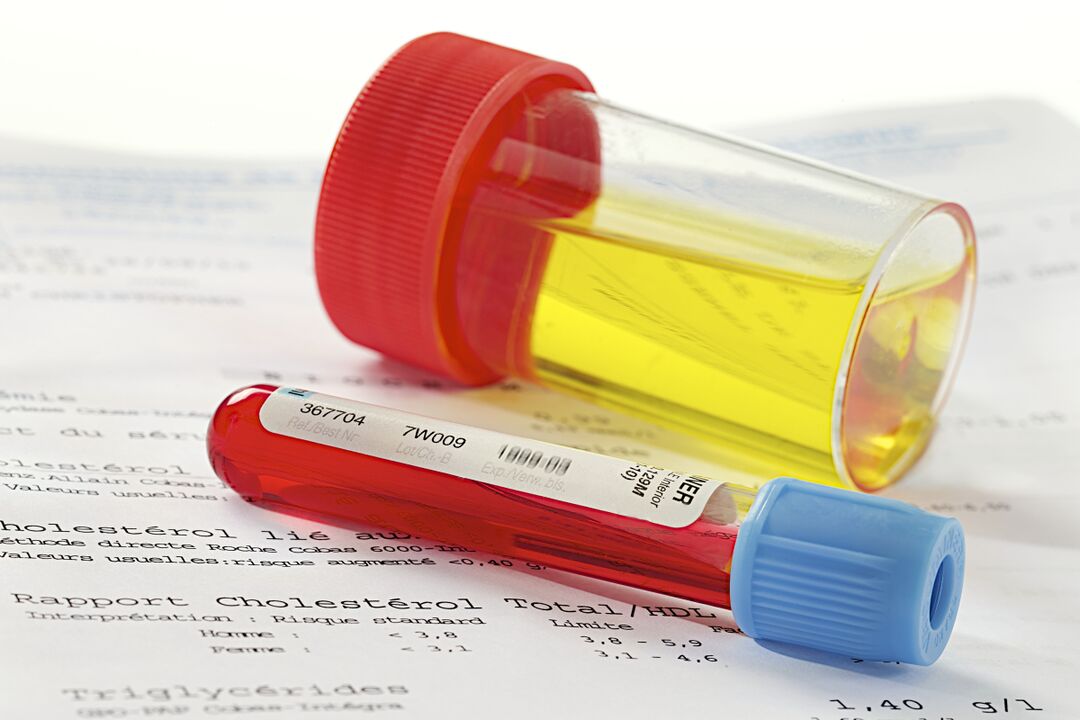
A complete blood count helps confirm acute prostatitis - with this diagnosis there is an increase in the number of neutrophils with a shift in the leukocyte formula to the left and a sharp decrease in the level of eosinophils. May also increase ESR. Chronic inflammation is characterized by low hemoglobin levels (less than 100 grams per liter of blood).
To rule out prostate cancer, a serological test is done to look for levels of PSA - a prostate-specific antigen. Its increased number indicates the presence of tumors, but does not determine their nature (benign or malignant). To find out this parameter, prostate biopsy is performed with histological study of the obtained material.
prostate secret
When examining the prostate gland rectally, the urologist notices the discharge. Usually, it is thick, odorless, white in color. The maximum volume is 1-2 drops (3-5 ml). It must not contain impurities of pus or blood, as this is a sign of an illness. The consistency of the juice plays a role - if it comes out in lumps, then the man has diverticulitis prostatitis. A more detailed study of the material allows for laboratory research.
Microscopic and bacteriological study of the secret of the prostate is based on white blood cell counts, lecithin granules, amyloid bodies, macrophages, pathogenic and opportunistic organisms. Prostatitis is characterized by a deviation:
- Acute prostatitis: pale yellow discharge, pungent odor, acidic pH, leukocytes account for less than 1/2, epithelial cells account for ¼ cells.
- Chronic bacterial prostatitis: yellow or brown color, sour odor, acidic pH, white blood cells less than 1/2, macrophages (over 15), many amyloid bodies.
- Chronic nonbacterial prostatitis: reddish-brown, odorless, leukocytes normal, macrophages detected (10–20), many amyloid bodies.

In some cases, the study of the secret does not allow to detect prostatitis due to inaccurate indicators. Fuzzy data will have the presence of inflammation in other organs, body temperature above 39 degrees. It is impossible to sample the material with cases of contraindications to rectal massage (prostate juice is extracted by this method): with exacerbations of hemorrhoids, anal fissures, prostatic tuberculosis.
urine
General and cytological analysis of urine does not require special preparation. A man must collect ingredients in the morning before breakfast in boxes (it is better to buy sterile plastic containers at the pharmacy). A few hours before, the patient should not urinate and should not take medicine and alcoholic beverages a day before.
In the catarrhal form of the disease, deviations from the norm in the general analysis of urine may not be observed. With prostatitis in the terminal stage, purulent fibers are detected in the material under study, which precipitate.
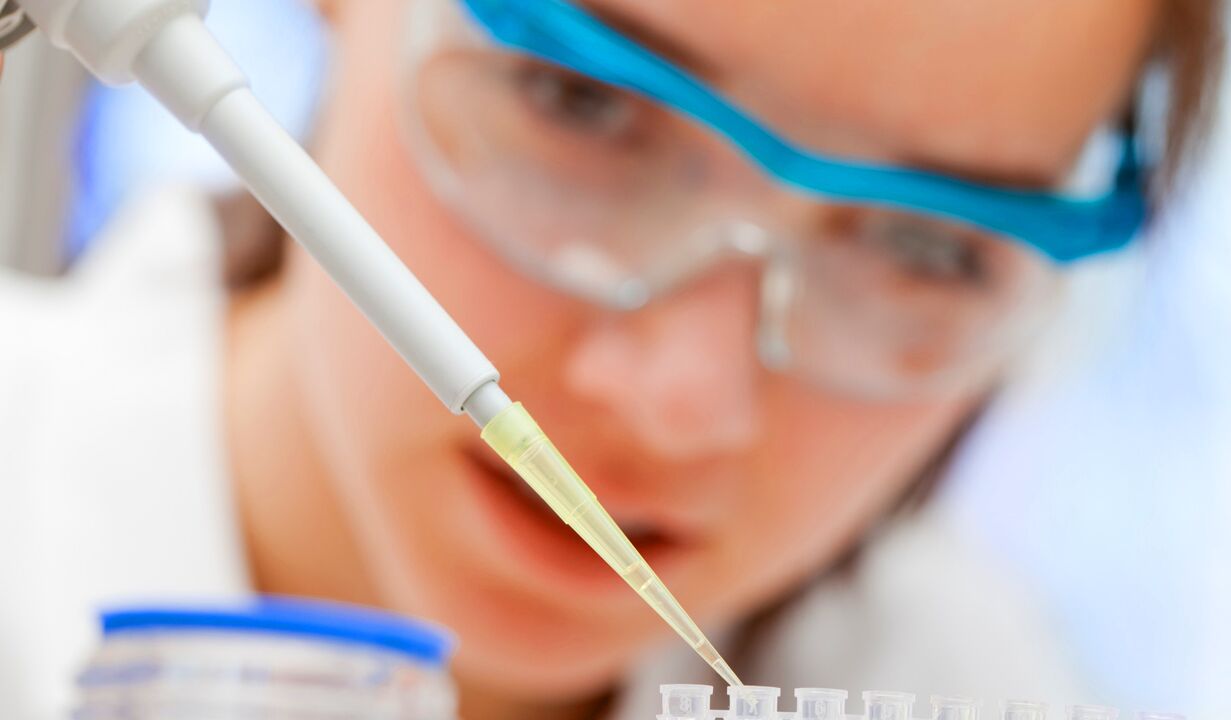
A study of a man's urine allows you to diagnose leukocytosis (an increase in the level of white blood cells, which occurs with inflammation). Urine culture is performed to determine the type of causative agent. Signs of pathogens in the urine occur with infectious prostatitis or complications such as inflammation of the bladder and urethra or pyelonephritis.
gauze from the urethra
A smear from the urethra is a type of test that confirms inflammation caused by pathogens such as Trichomonas, gonococci, Candida. It is prescribed if the syndrome of chronic pelvic pain, itching in the groin, rash on the penis, difficulty urinating is observed. The study of the scanned material allows the differential diagnosis - to distinguish between prostatitis, urethritis or sexually transmitted diseases, which often have similar or co-occurring symptoms.
The disease is diagnosed only by a correctly collected smear. A man will have to abstain from sex for 2 days before getting the document. One hour before the procedure, it is not recommended to urinate. If the patient is taking NSAIDs or antibiotics, this analysis is useless - the data will be inaccurate.
sperm map
Sperm - analysis of a man's ejaculation. In addition to prostatitis, diseases of the seminal vesicles and testes are diagnosed this way and infertility can be detected. The document submitted by a man whose body temperature is no higher than 39 degrees, has not taken antibiotics and has not had sex for 2-3 days, will be accurate. The day before donating sperm, do not massage the prostate gland.
Spermograms include three types of studies. Macroscopic analysis involves studying the volume, color, viscosity, and liquefaction time of semen. Microscopic examination shows the quantity and quality of sperm. Biochemical analysis determines the concentration in semen of fructose, zinc, alpha-glucosidase, L-carnitine. In bacterial prostatitis, antisperm antibodies can be detected.
With prostatitis, a spermogram may reveal a number of abnormalities. For example, decreased semen volume (less than 1. 5 ml), low sperm concentration in 1 ml (less than 15 million), sperm failure (more than 40% of spermatozoa), akinospermia (more than 32% of spermatozoa). motionless) ).
prostate tissue
When examining an enlarged prostate, it is not always possible to understand the nature of the seals and enlargements by rectal examination and urine and blood tests. It can be a benign (adenoma, prostatitis) or malignant (cancerous) pathology. An accurate diagnosis helps in microscopic examination of prostate tissue, obtained by biopsy.
The procedure is performed as follows: the patient is inserted into the rectum with an ultrasound machine sensor, at the end of which there is a gun with a biopsy needle. With a sharp tip, a microscopic portion of glandular tissue is cut out and taken to a laboratory for study. The test is carried out by the method of comparing the material's parameters with those from the Gleason table.
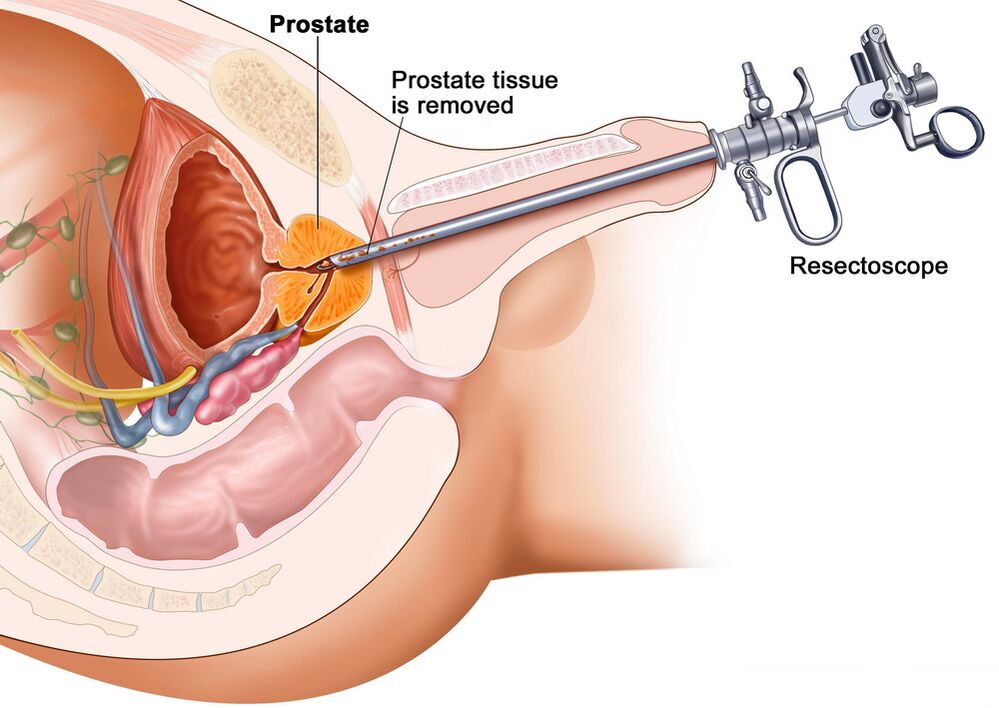
With viral, viral or bacterial prostatitis, the glandular cells decrease in size, the amount of connective tissue in the intercellular space increases. Atypical cells with altered nuclei will not be observed. If a man has prostate cancer, when the glandular cells become large and clustered, their abnormal changes are exposed.
Ultrasound, MRI and other methods
To confirm the diagnosis, as well as determine the stage of development and features of the disease process, specific studies are carried out. For pathologies of the pelvic organs, the following methods of examination are used:
- traditional ultrasound;
- transrectal ultrasound;
- magnetic resonance imaging (MRI);
- CT scan.
These methods allow you to find out the prostate's shape, thickness, width, length, volume, structural uniformity, echogenicity, vascularity (vascular pattern). These parameters are necessary for the identification of urological pathologies: ultrasound, CT and MRI show inflammatory, proliferative, cancerous diseases of the prostate gland.
Classical ultrasound has the greatest accuracy, but this method continues to be used because it is easy to use and affordable. Transrectal ultrasound is considered the "gold standard" for detecting prostatitis, but prostate cancer is difficult to detect this way (especially in the early stages). MRI and CT have the highest accuracy in identifying tumors, but these are complex and expensive procedures, so they are done when other research methods suggest a high probability of cancer.
Check at home
The prostate gland can be examined at home and identified the main symptoms of a urological problem. Of course, this would not be a diagnosis of chronic prostatitis, as it would not be possible to determine with certainty what caused the enlargement of the gland. But the presence of alarming signs during an independent examination of a person's body is an important reason to immediately contact a urologist.
Just like that, without the need to conduct self-diagnosis is not worth it. Indications for home testing are:
- Urinary disorders (frequent need to urinate).
- Weak flow, inability to completely empty the bladder.
- Discomfort in the abdomen or groin (eg, painful urination).
- Decreased libido, impaired erection.
- Purulent impurities or discoloration of urine to white or brown.
- Sperm or prostate (outflow from the penis).
At home, the examination takes place according to the same scheme as in the doctor's office. First, a man needs to clean the intestines - after 10-12 hours, carry out an enema or take a laxative. Shower right before the procedure. Then lie on your side, bend your knees, insert your index finger into the rectum (before that, put your finger in and apply Vaseline on top).
A digital rectal exam is performed by probing the posterior wall of the bowel and detecting the adjacent prostate. This gland is easily detected - it feels like a small walnut to the touch. Bad symptoms: prostate enlargement, irregular shape, tuberculosis, pain when probing.These signs signal inflammation or other pathological process of the prostate gland. Once they are identified, you should definitely visit a urologist, as a more accurate diagnosis and treatment plan is required.


























